How To Add Instrumentation To A Sample
Terminal time, we looked at Pro Tools 2018's recently added virtual instrument, the UVI Falcon . We took a basic look through the features of what is a very deep and powerful workstation, capable of complex synthesis and sampling techniques. Here, nosotros're going to delve a little deeper into the instrument. We're going to employ a sample library we've recorded ourselves to build a sample-based instrument from scratch.
For this sample musical instrument, we're going to utilise samples of a 16-primal Malian balafon, purchased at the Maison des Artisans in Bamako, Mali, while fortunate plenty to be visiting the country for the Festival Au Désert back in 2010. The instrument was recorded in Metropolis Studio A, with assistance from Liam Nolan, through a stereo pair of Neumann TLM 170 microphones placed almost three feet above the balafon and a further spaced pair of Neumann M 49 room mics. We recorded four velocity layers per key, and have mixed the close and room mics together to create 64 samples to exist loaded into Falcon.
It's possible to create a sample instrument from a single sample, using the built-in pitch-shifting to map a unmarried note out beyond the whole keyboard, but the farther from the source pitch you go, the more than synthetic the sampling is going to exist. Similarly, you can use the aamplitude envelope to map velocity to level, but this won't requite you the variation in tonality that a real instrument gives when it is played heavily or softly. In the early days of sampling, when hard-disk space was at a premium, information technology was standard exercise to utilise every bit few samples as possible.
While it could be argued that the limitations of the sampler helped to create the character of those instruments, they didn't tend to sound all that realistic. More than recently, hyper-sampled instruments with tens or even hundreds of samples per note are being created, providing incredible detail. However, this level of detail takes an incredible corporeality of time and patience, not to mention skill, from the performer, recordist and sample library coders.
For this sample instrument, we've recorded iv samples per key, capturing each of the 16 keys, which are tuned to M#/Ab, B, C#/Db, E and F#/Gb (an E major pentatonic scale, commonly played as a C# pocket-size pentatonic), spread out beyond three octaves. From this, we tin create a sampled balafon with some of the dynamic response of the real thing, with velocity controlling which of the iv samples per key is played, as well as at what volume. We have a greater pitch range than the real musical instrument, too, by using pitch-shifting to create the missing notes of the chromatic scale.
In addition to pitch, it'southward important when edifice a sampling instrument to get the amplitude envelope configured in a realistic-sounding way. Most instruments take a circuitous relationship controlling the note length, with the musician able to hold notes for considerable amounts of time, while other instruments are more percussive in nature, such as the balafon we're using hither.
Each time a key is struck with the mallet on the balafon, it rings out for a fixed (and quite brief) length of fourth dimension. It could be muted, to shorten the length of the notation, only there isn't much a musician can exercise to lengthen it further. For playing as a sample musical instrument, we want to emulate this type of behaviour, and then nosotros don't need to set up whatever sample looping points to effort and extend the length of the annotation.
Similarly, we want to try and make sure that the full sample plays out every time a key is hit. This is done from the amplitude envelope in the sampler. This module also controls how much variation at that place is when triggering a sample at its lowest and highest velocity position. If we don't ready some amplitude variation, and so we will only hear the four velocity strengths that we've recorded providing any dynamic interest.
Learning how to create your own sample instruments opens upwards whole new creative options in Pro Tools with UVI's Falcon instrument. In add-on to sampling whatsoever unusual instruments you come up beyond, yous tin also create unique, custom instruments from any sounds you might happen to record.
The more than you experiment with audio blueprint, the more sounds y'all might come across that yous want to be able to create entire instruments from. Sampling enables you lot to pitch-shift even a single example across a whole range of notes to create custom instruments.
Create a sample instrument using UVI Falcon: step-by-step
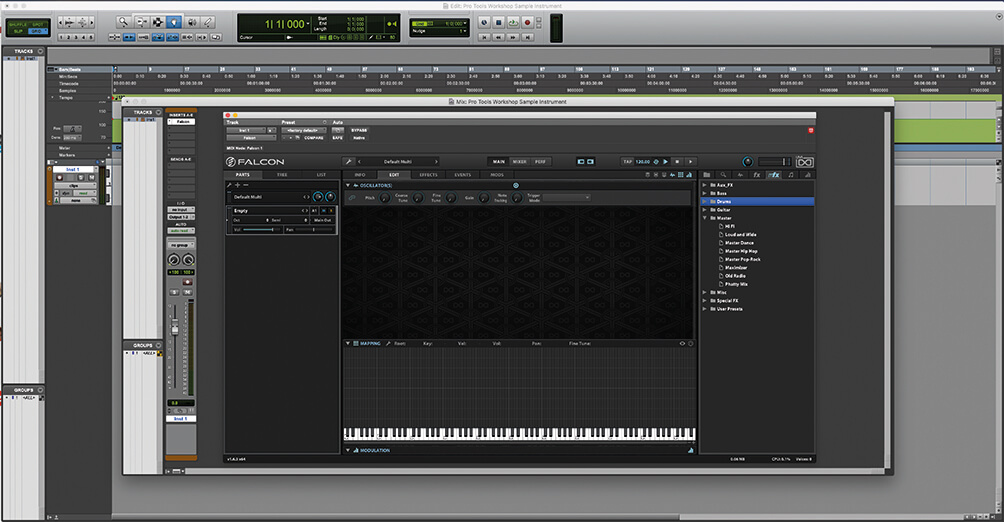
1. Our Pro Tools projection this issue contains a single instrument aqueduct with an instance of UVI Falcon in the first plug-in slot. You'll discover the project file on the DVD, or at MusicTech .
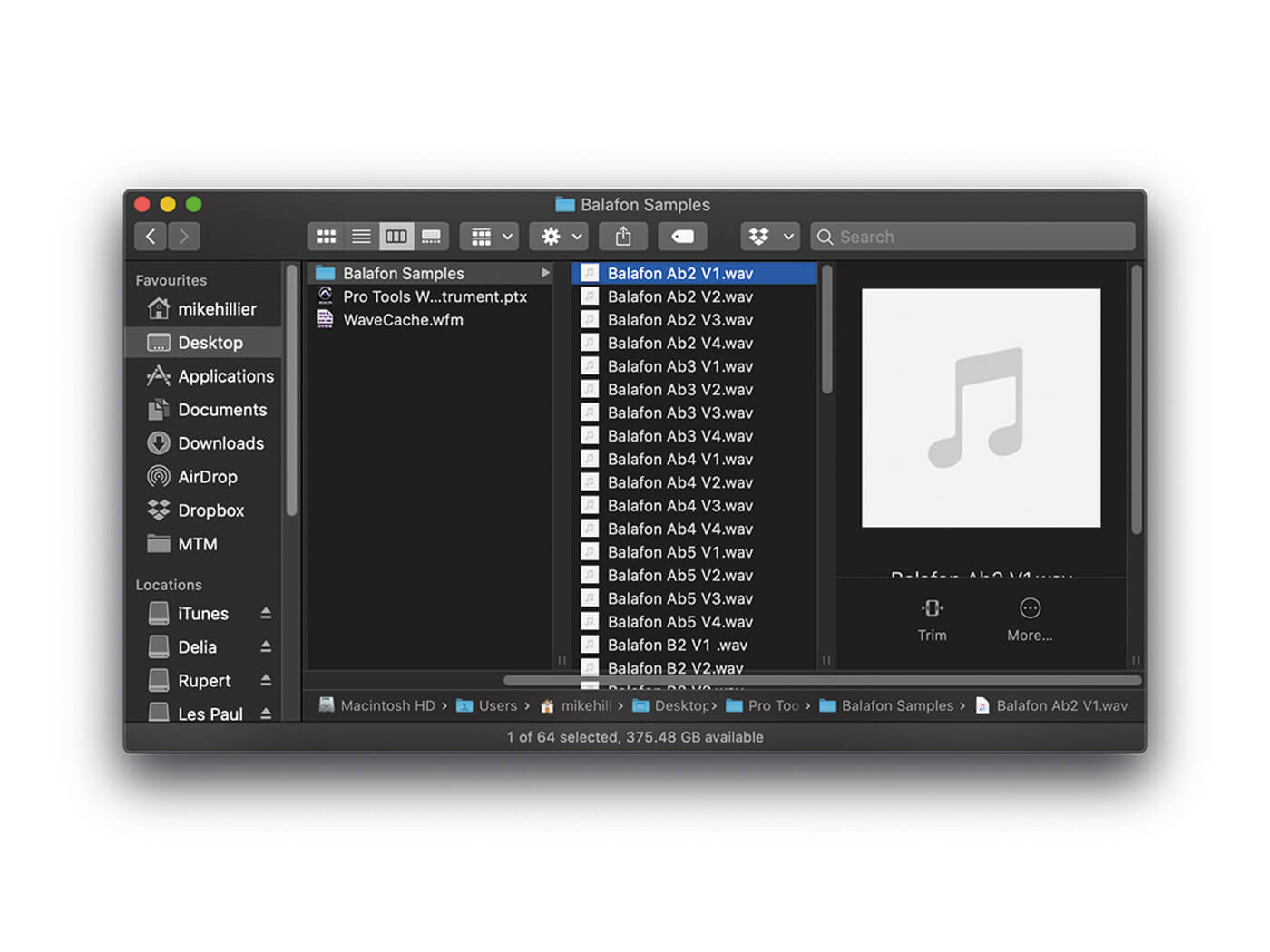
2. In the project folder supplied with the workshop, you lot'll detect a folder containing the 64 sample/sound files which nosotros're going to apply to build our balafon musical instrument.
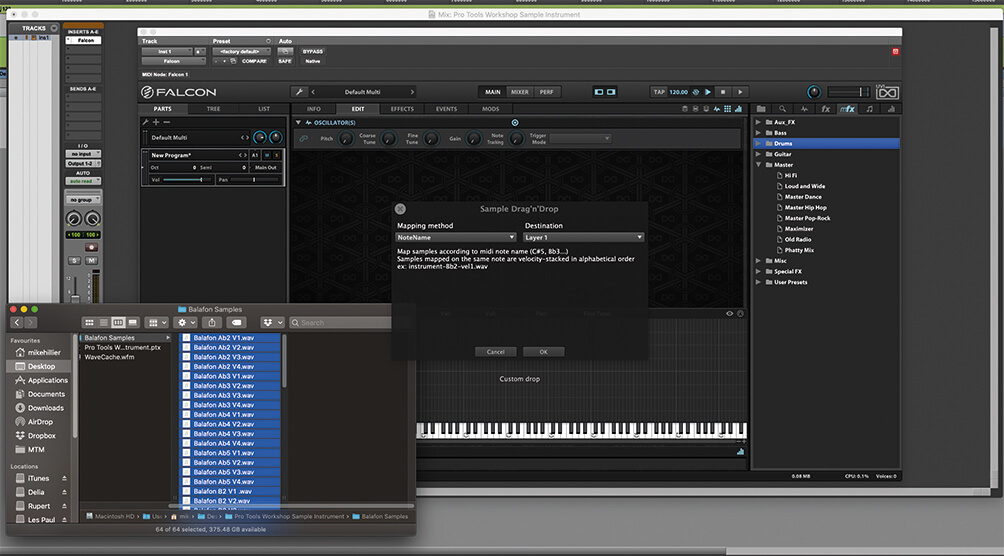
3. Now it'due south time to drag the sample files from the balafon that we have supplied from the project binder onto the Falcon GUI while holding the Alt (PC) or Pick (Mac) key.
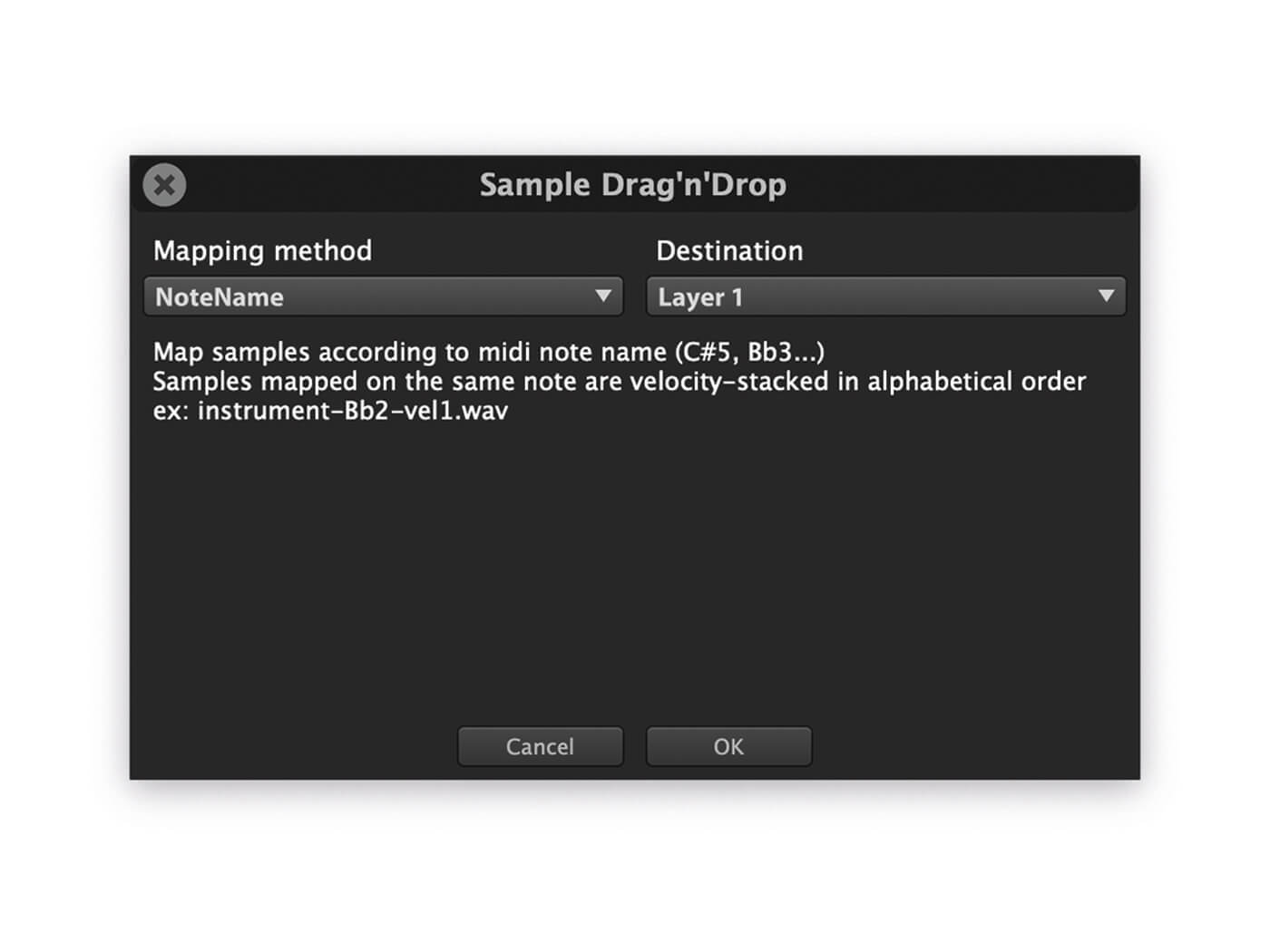
four. The sample elevate-and-drop window allows you lot to select the mapping method and layer. Nosotros take named our files in the 'instrument-note-velocity' default naming convention. Select it, and Layer 1 as the destination, and press OK.
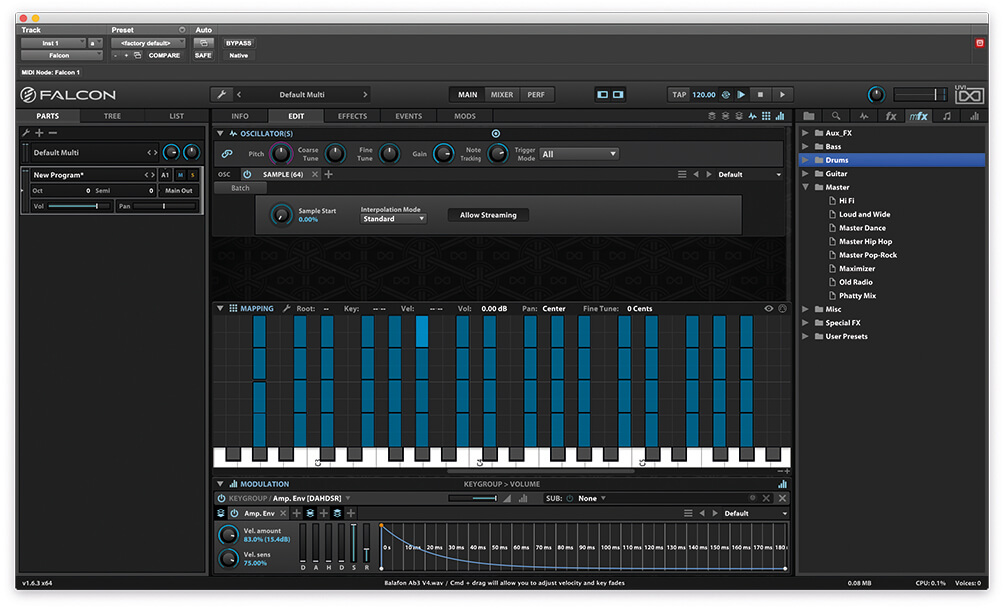
five. This maps our 16 notes onto their keys and places the velocity layers into evenly spaced groups of four. Playing any of these volition trigger the sample, merely the amp envelope doesn't sound realistic when releasing a note.

vi. We can fill up in the missing notes by highlighting each sample and dragging information technology out to make full the gaps. Showtime past highlighting all four samples that make up the lowest G#/A♭ and drag the edge out one semi-tone to the right (up in pitch).
![]()
LIST EDITOR In addition to editing the sample instrument from the GUI, it'southward possible to edit the range of each sample from the Listing Editor. Whatever edits here will also appear in the GUI, so it's still possible to visualise what is going on in your musical instrument.

7. Take the next set of iv samples that make up the B and drag the edge of those one semitone to the left. The next missing note in the scale, a C, could exist created from either the B pitched up or the C#/D pitched down.

8. At the extremes of the range, the lowest and highest samples could be stretched out to make full as much equally you require – but call up, the farther you pitch-shift the notes, the less realistic they are likely to sound.

ix. You should be able to play just over three octaves from your keyboard, with different velocities triggering different strengths. We can melody this to your playing style, if you desire the loudest sample to trigger on the loudest of velocities.

10. Fill in the missing infinite past highlighting the third-loudest velocity layer and dragging the top of these up to run into the peak velocity layer. Yous could further fine-tune this by adjusting the first and second velocity layers.
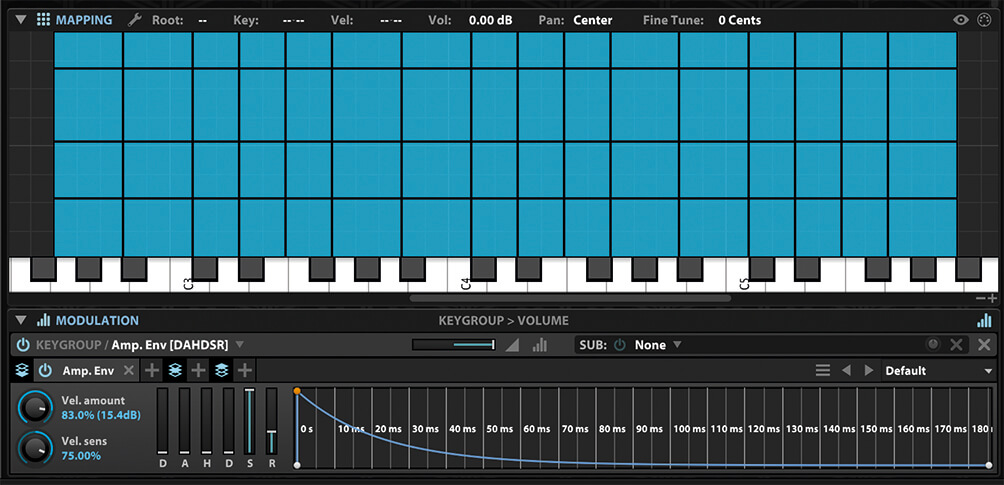
xi. Now highlight all of the sample layers in the mapping editor and curl down to the amp envelope in the Modulation section.

12. Because of the nature of percussive instruments like the balafon, a full DAHDSR envelope isn't necessary. Notes will ring out unless muted or striking again. Permit's swap the DAHDSR envelope for a simpler AHD envelope.
![]()
Automated Fundamental RANGES Rather than cull for yourself which notes extend onto which other notes for pitch-shifting, it's possible to get Falcon to determine this itself. Highlight all the notes and select Auto Extend Key Ranges from the right-click popular-upward menu.

xiii. The default position seems to work, with 0 set on and a lengthy Hold parameter. Only we can salve on arrangement resources in polyphonic performances if we reduce the Agree to something a little more realistic.
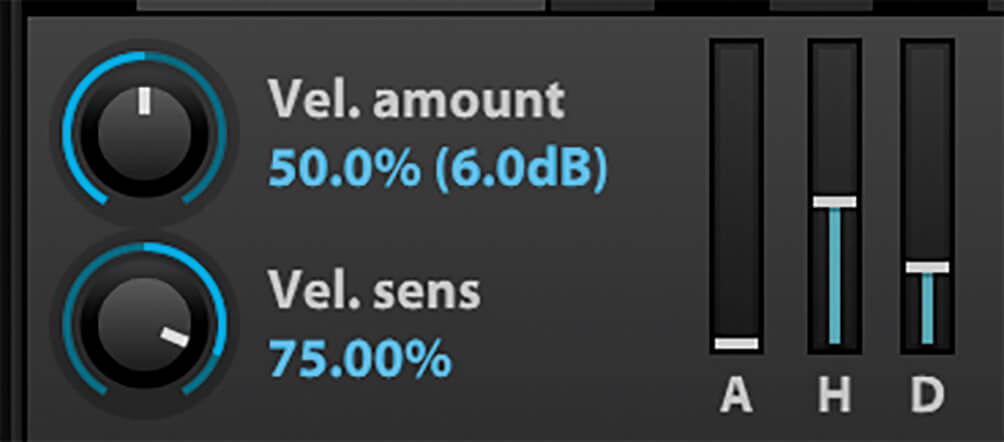
xiv. Nosotros tin can improve the dynamic expressiveness of the instrument further if we increment the Velocity Amount parameter of the AHD envelope. This ties the forcefulness of the velocity to the strength of the played betoken.
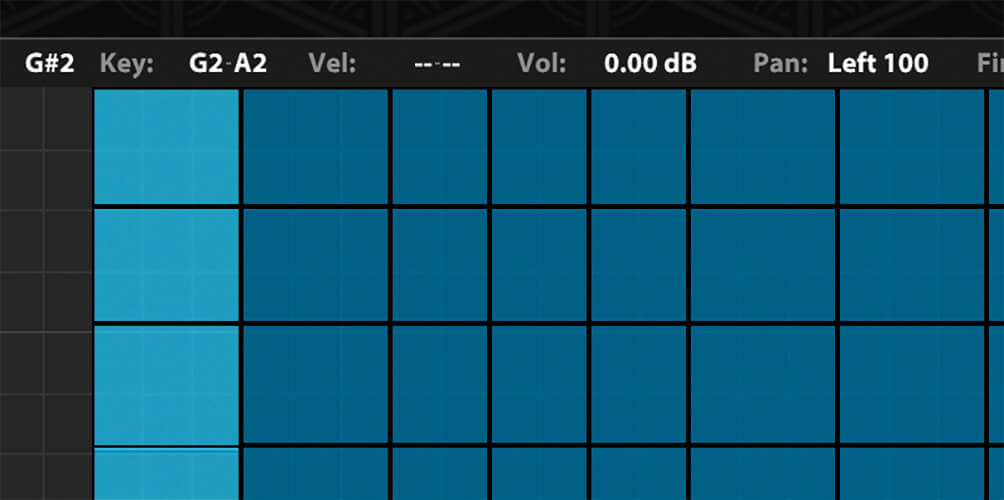
15. The samples we've used were recorded in stereo, so the bass notes volition naturally be slightly farther to the left than the college notes. If you lot've recorded your samples in mono, assign each annotation its own stereo position.
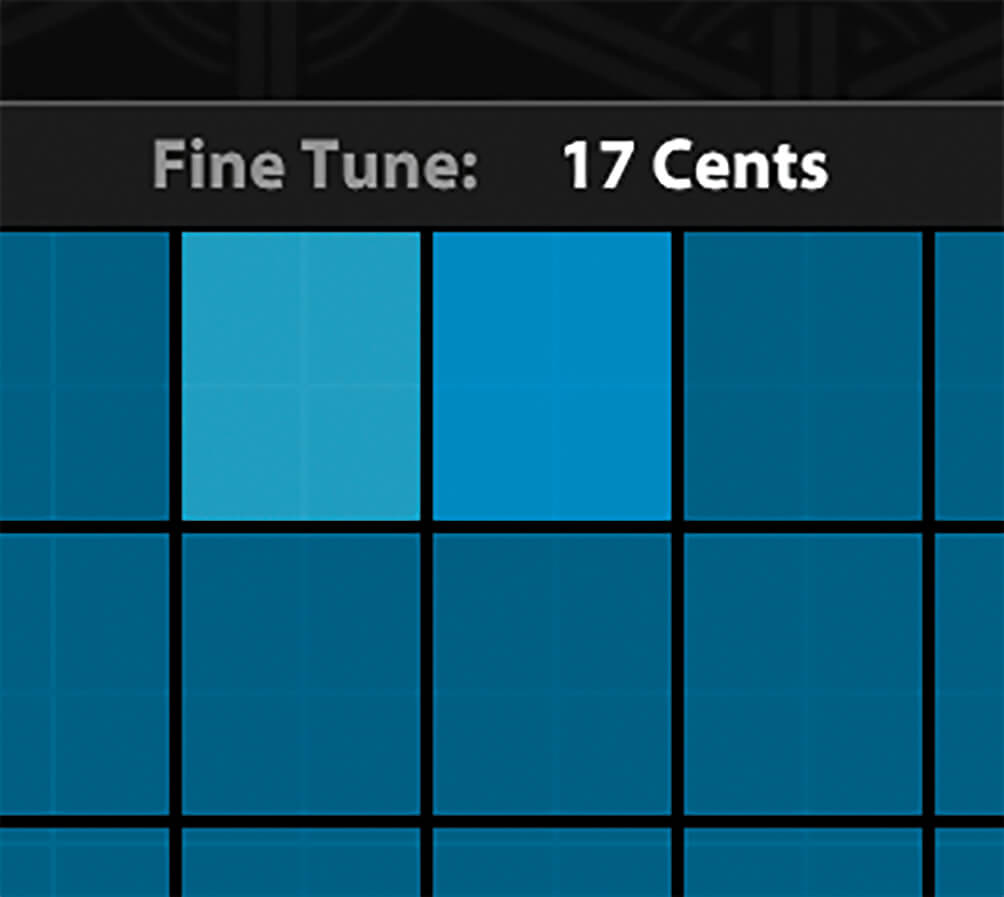
16. Similarly, if whatsoever of the notes you've recorded were not perfectly in tune when yous began, you lot tin arrange the fine pitch of individual samples from the mapping editor.
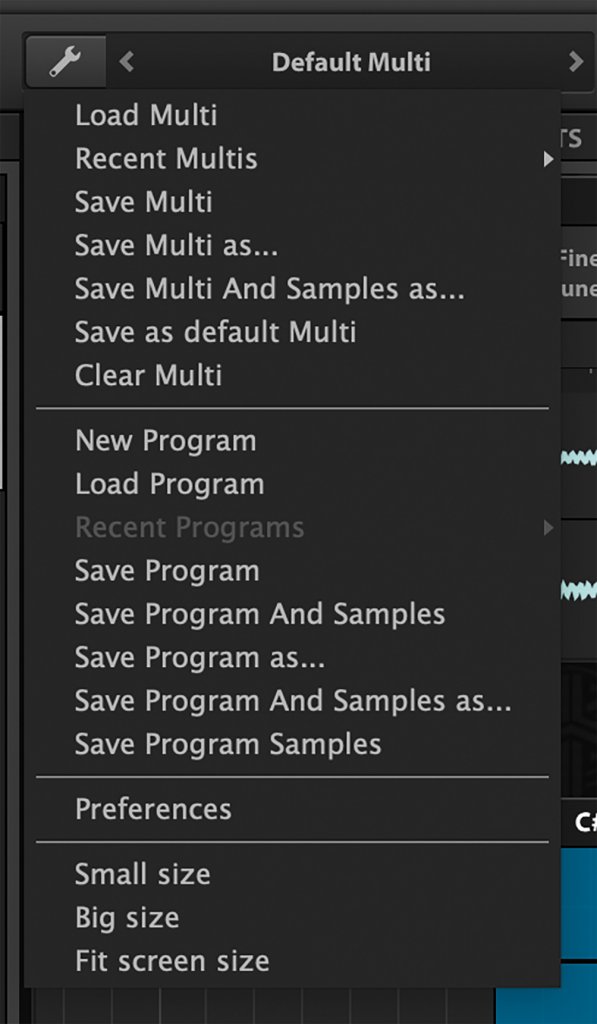
17. With your musical instrument built, it's time to save it. Click on the spanner icon at the top of the Falcon GUI and select 'Save Program and Samples As'.
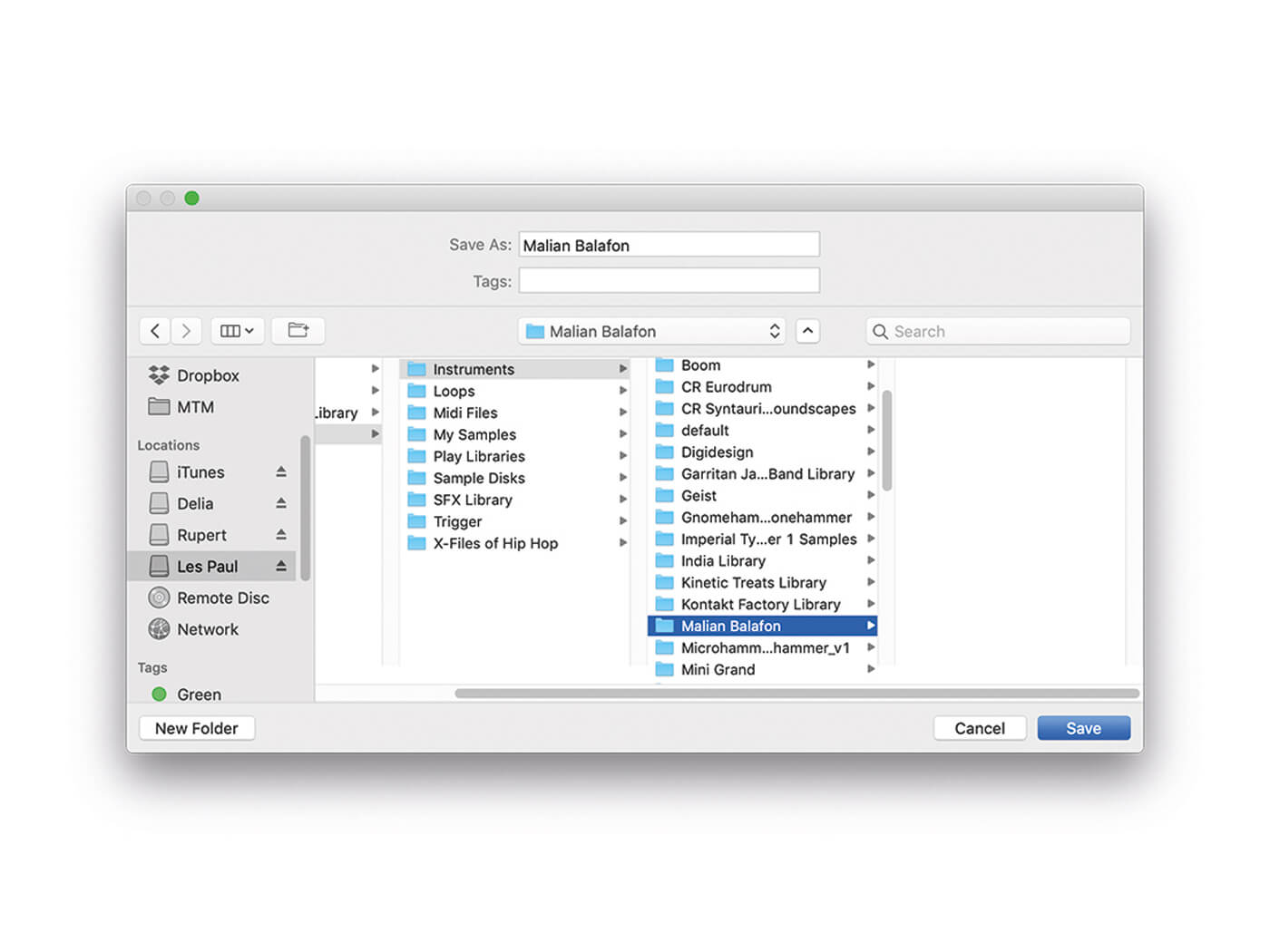
18. Salve the program in a suitable location on your drive, and give it a suitable name. Y'all will now be able to recall information technology, fix for use in your next projection.
How To Add Instrumentation To A Sample,
Source: https://musictech.com/tutorials/how-to-create-your-own-sample-instruments-in-pro-tools/
Posted by: evanstruits.blogspot.com


0 Response to "How To Add Instrumentation To A Sample"
Post a Comment